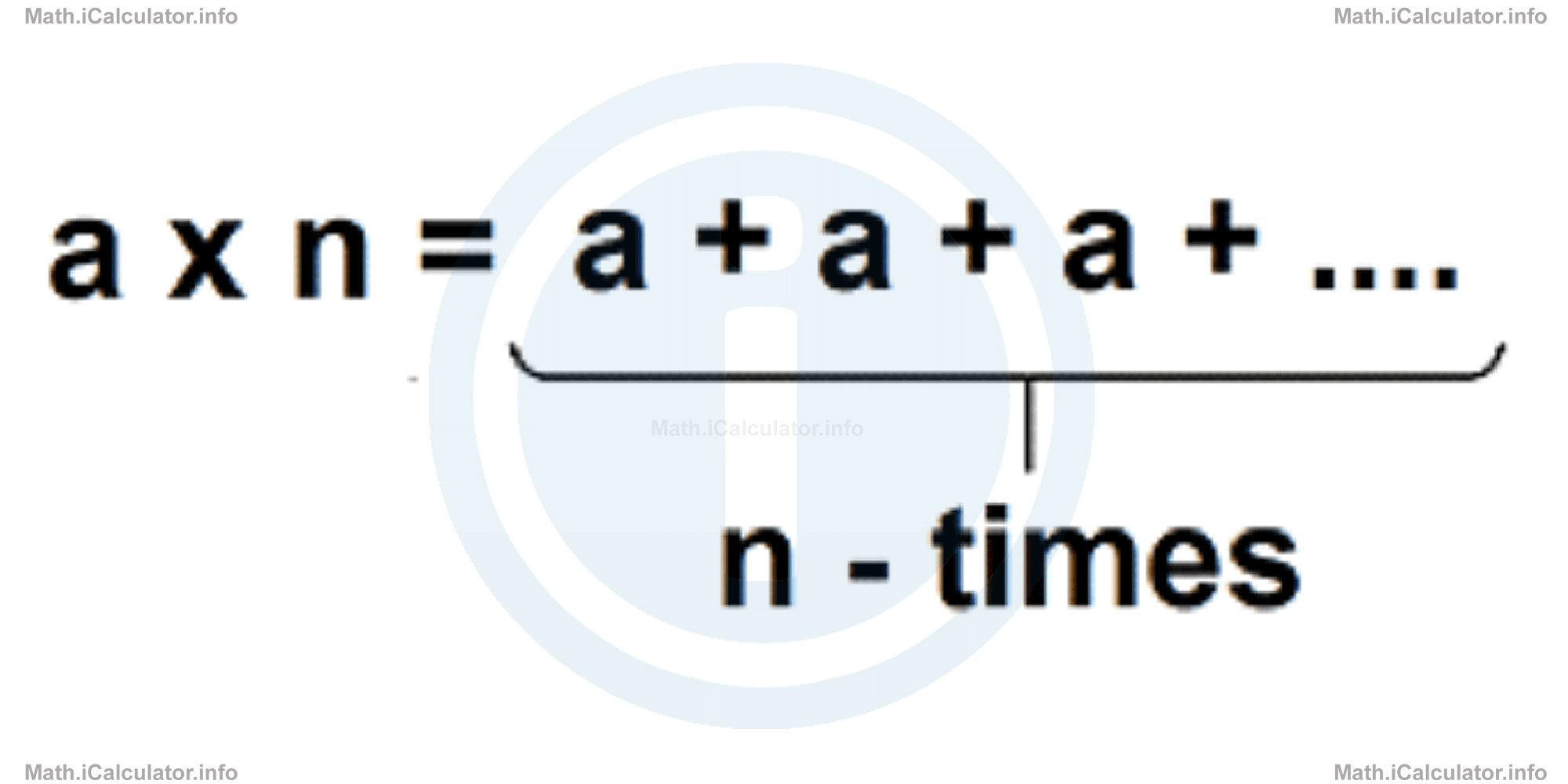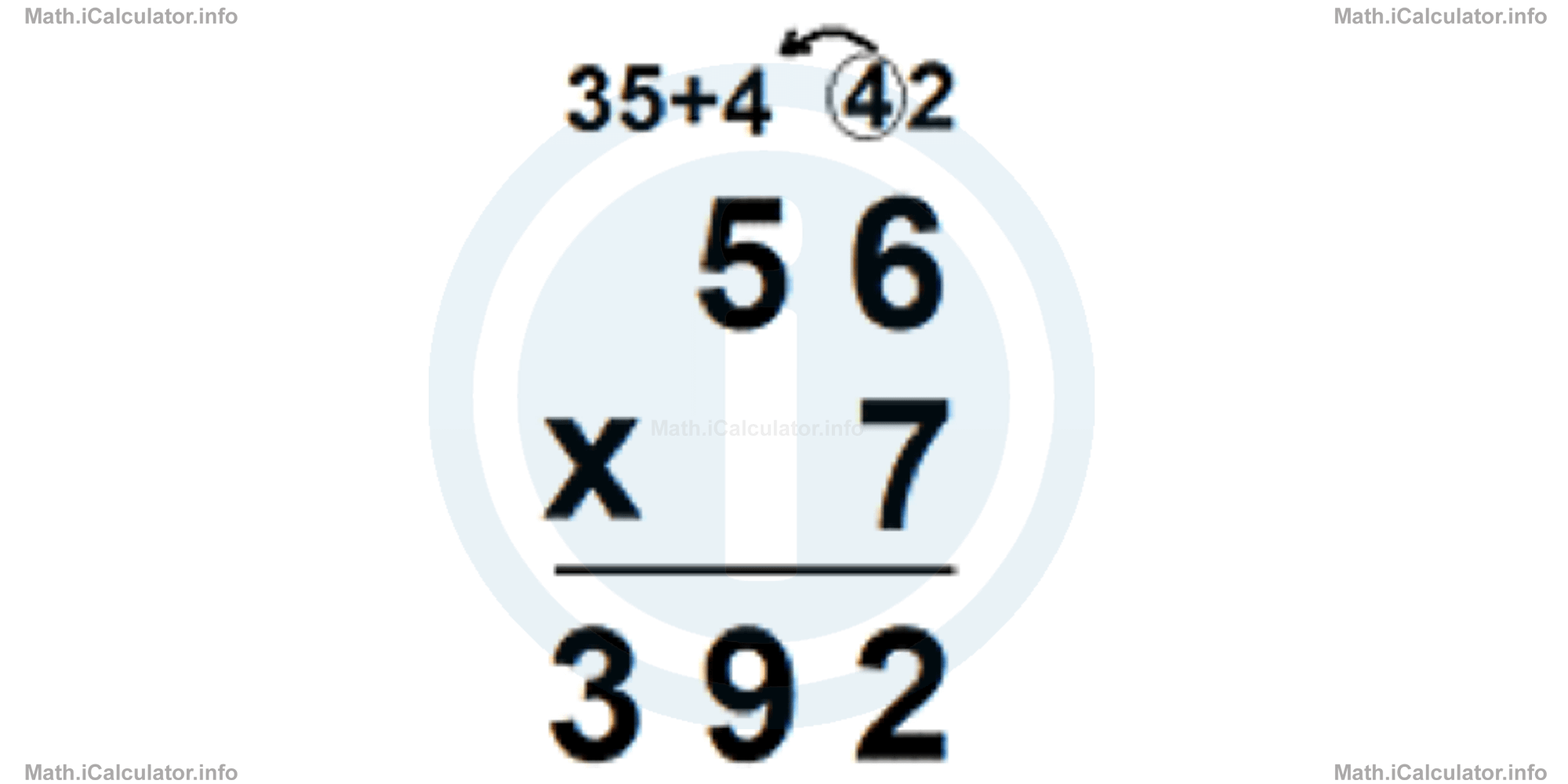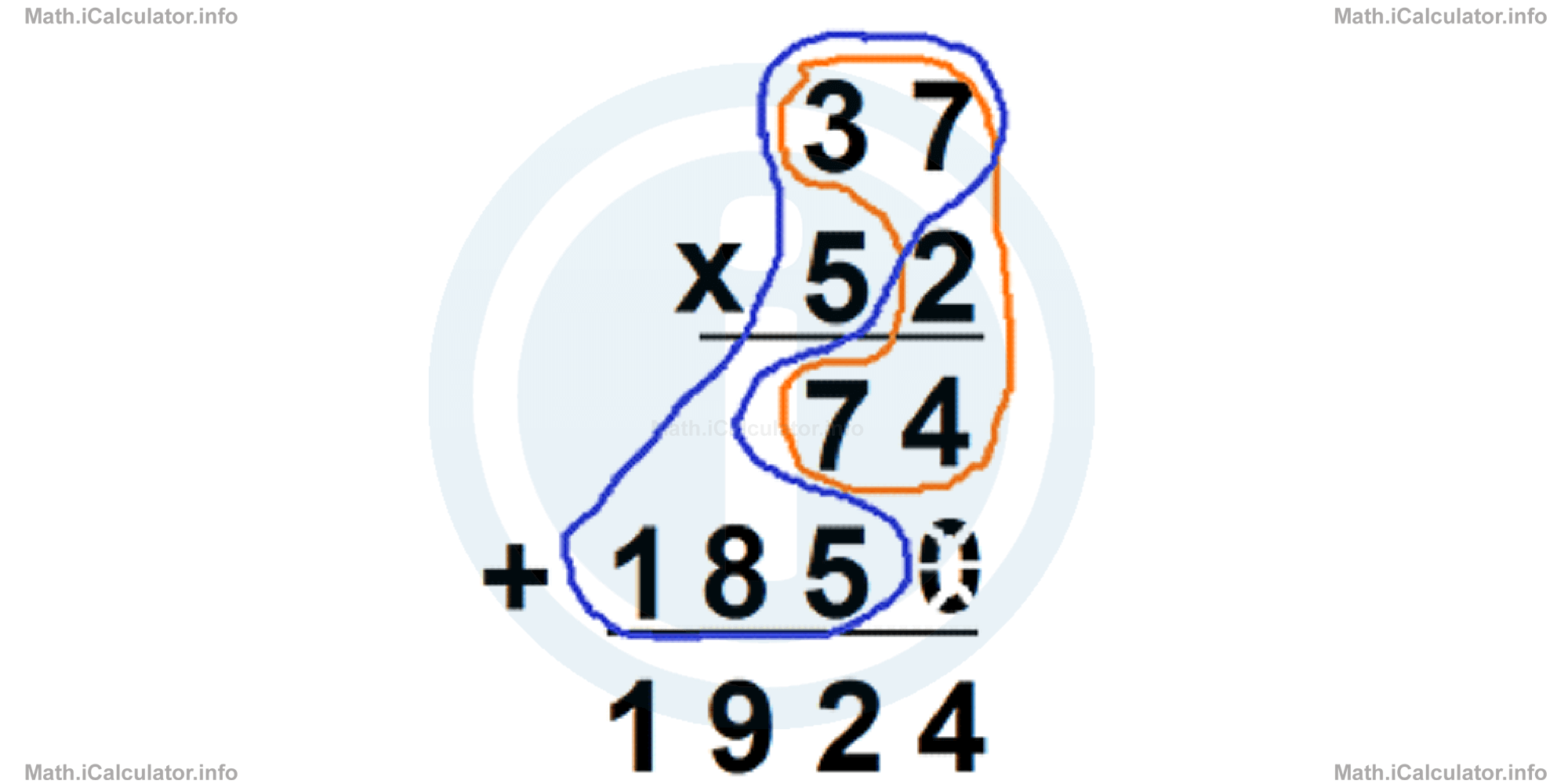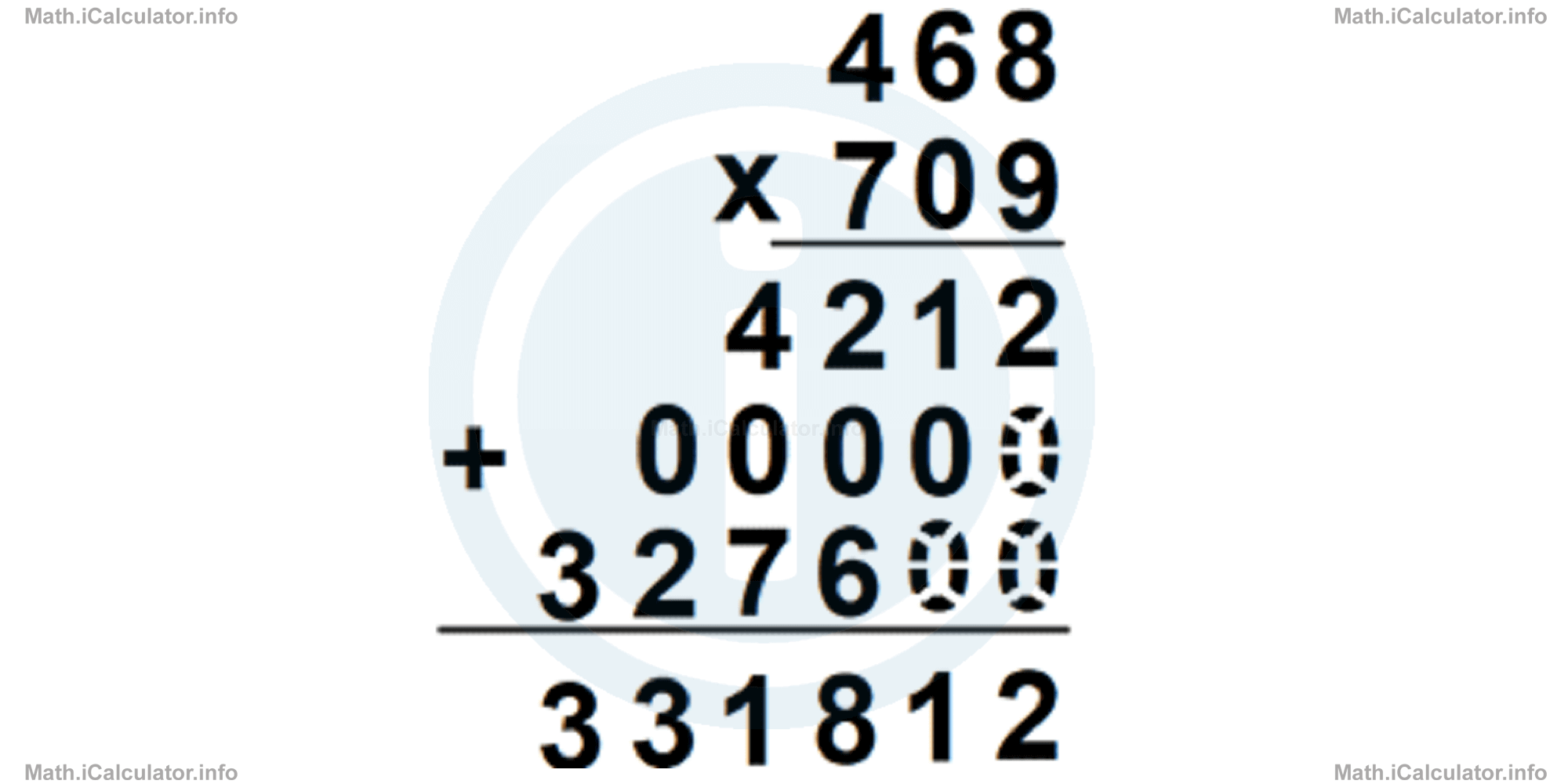Menu
Math Lesson 1.3.3 - Multiplication
Please provide a rating, it takes seconds and helps us to keep this resource free for all to use
Welcome to our Math lesson on Multiplication, this is the third lesson of our suite of math lessons covering the topic of Operations with Numbers and Properties of Operations, you can find links to the other lessons within this tutorial and access additional Math learning resources below this lesson.
Multiplication
Multiplication is a shorter representation of the repeated addition of equal numbers. It is represented in expressions through the symbols ( × ) or ( · ). For example, if we see written somewhere 5 × 4 (or 5 · 4), we read "5 multiplied by 4" or "5 times 4" which means (5 + 5 + 5 + 5).
In general, we have

The numbers participating in a multiplication operation are known as factors and the result of a multiplication is called the product. For example, in the multiplication we saw earlier
5 and 4 are both factors and 20 is the product.
Properties of multiplication
As an addition of equal numbers, multiplication has all properties of addition, but it also has some extra properties. These are:
1. Closure property of multiplication
In simple words, this property states that if two (or more) factors belong to a given number set, the product also belongs to this set.
For example, in 4 × 7 = 28 both factors are natural numbers. As a results, the product is also a natural number.
Another example: (-4) × (-2) = (+8). Both factors are integers, hence the product is also an integer.
Symbolically, we write the closure property of multiplication as
a × b = c a ϵ X and b ϵ X then c ϵ X
where a and b are the factors, c is the product, X is the given set of numbers which a and b belong to.
2. Commutative property of multiplication
According to this property, when we switch the place of factors the product does not change. For example, since 4 × 9 = 36, then 9 × 4 = 36 as well. The commutative property is often used when there are more than two factors in a multiplication and we change the place of two of them to make the operations easier, for example, to obtain partial products which end with any zero. Let's consider a couple of examples to clarify this point.
Example 4
Find the product of the following multiplications:
b. 25 × 9 × 4 =
Solution 4
- Expressions involving multiplication are normally solved by completing the operations from left to right. However, here we switch the places of 7 and 6 to make the operations easier. Thus, we have 5 × 7 × 6If the commutative property was not used, we would have
= 5 × 6 × 7
= 30 × 7
= 2105 × 7 × 6The operation 35 × 6 is more challenging than 30 × 7, as in the second case, we can find the value of 3 × 7 = 21 and then, add a zero to the product.
= 35 × 6
= 210
In symbols, the commutative property of multiplication is written as
3. Associative property of multiplication
The associative property of multiplication is similar to that of addition in the sense that we can start doing the operations, not from the two leftmost factors but, from somewhere else for convenience as the result does not change. For example, in the mathematical expression 8 × 4 × 5, we can do 4 × 5 first, i.e.
= 8 × (4 × 5)
= 8 × 20
= 160
In symbols, the associative property of multiplication is written as
4. Distributive property
This is a new property that integrates addition (or subtraction) and multiplication. In simple words:
When an expression inside brackets containing addition or subtraction is multiplied by a number, the expression can be written without brackets where the given number multiplies every element of the expression separately.
In symbols, we can write the distributive property as
Example 5
Calculate the value of expressions
b. (31 - 7) × 3 =
Solution 5
- Using the distributive property of multiplication, we obtain (18 + 4) × 5If the distributive property was not used, we would have
= 18 × 5 + 4 × 5
= 90 + 20
= 110(18 + 4) × 5Hence, the result is the same in both cases.
= 22 × 5
= 110 - Again, using the distributive property of multiplication, we obtain (31 - 7) × 3If the distributive property was not used, we would have
= 31 × 3 - 7 × 3
= 93 - 21
= 72(31 - 7) × 3Again, the result is the same; this fact confirms the correctness of the distributive property of multiplication.
= 24 × 3
= 72
5. Multiplicative identity property
Recall that the number 0 was the identity element of addition, i.e. an element that didn't change the value of expression. In multiplication, this identity element is the number 1. This means that if we multiply a number by 1, the product is the same as the number itself.
We can write the multiplicative identity property in symbols as
Multiplication in column
We can multiply two numbers in column in a similar way to addition in column. Thus, we multiply each number of the upper factor to each number of the lower factor and the products obtained are written in separate rows below each other by starting (due right) from the position of the digit of the lower number involved in the process. When an individual product is more than 10, we carry numbers in the same way as we did in addition. Then these separate products are added in column. Look at the examples below.
Example 6
Calculate the following products in columns.
b. 37 × 52 =
c. 468 × 709 =
Solution 6
- We write the factors in columns where the factor with the largest number of digits is written in the upper part for convenience. Hence, in column we write 56 × 7 instead of 7 × 56. We have

- We multiply 37 by 2 and 37 by 5 separately. However, we write the second product (37 × 5) one position more in left. We have
 We may write a zero in the empty position at the end of the second product derived from the fact that we begin writing this product one position more in left. However, this is not obligatory.
We may write a zero in the empty position at the end of the second product derived from the fact that we begin writing this product one position more in left. However, this is not obligatory. - We use the same procedure as in (b). Despite the fact that the second product gives zero, we write it in a separate column anyway. We have

More Operations with Numbers and Properties of Operations Lessons and Learning Resources
Whats next?
Enjoy the "Multiplication" math lesson? People who liked the "Operations with Numbers and Properties of Operations lesson found the following resources useful:
- Multiplication Feedback. Helps other - Leave a rating for this multiplication (see below)
- Arithmetic Math tutorial: Operations with Numbers and Properties of Operations. Read the Operations with Numbers and Properties of Operations math tutorial and build your math knowledge of Arithmetic
- Arithmetic Video tutorial: Operations with Numbers and Properties of Operations. Watch or listen to the Operations with Numbers and Properties of Operations video tutorial, a useful way to help you revise when travelling to and from school/college
- Arithmetic Revision Notes: Operations with Numbers and Properties of Operations. Print the notes so you can revise the key points covered in the math tutorial for Operations with Numbers and Properties of Operations
- Arithmetic Practice Questions: Operations with Numbers and Properties of Operations. Test and improve your knowledge of Operations with Numbers and Properties of Operations with example questins and answers
- Check your calculations for Arithmetic questions with our excellent Arithmetic calculators which contain full equations and calculations clearly displayed line by line. See the Arithmetic Calculators by iCalculator™ below.
- Continuing learning arithmetic - read our next math tutorial: Order of Operations and PEMDAS Rule
Help others Learning Math just like you
Please provide a rating, it takes seconds and helps us to keep this resource free for all to use
We hope you found this Math tutorial "Operations with Numbers and Properties of Operations" useful. If you did it would be great if you could spare the time to rate this math tutorial (simply click on the number of stars that match your assessment of this math learning aide) and/or share on social media, this helps us identify popular tutorials and calculators and expand our free learning resources to support our users around the world have free access to expand their knowledge of math and other disciplines.
Arithmetic Calculators by iCalculator™
- Arithmetic Expressions Calculator
- Decimal Hexadecimal Number Calculator
- Hexadecimal Decimal Number Calculator
- Hindu Arabic To Roman Numbers Converter
- Identifying Factors Number Calculator
- Least Common Multiple And Greatest Common Factor Calculator
- Prime Numbers Identifier
- Greatest Common Divisor Calculator
- Number Format Converter
- Math Powers
- Square Root Calculator
- Exponents Calculator
- Binary Calculator
- Binary To Decimal Calculator
- Common Factors
- Imperial Converter
- Imperial To Metric Converter
- Length Converter
- Metric Converter
- Metric Units Conversion Calculator
- Roman Numerals Converter
- Rounding Numbers Calculator
- Round To Nearest Multiple Calculator
- Sig Fig Calculator
- Unit Rate Calculator
- Weight Conversion Calculator